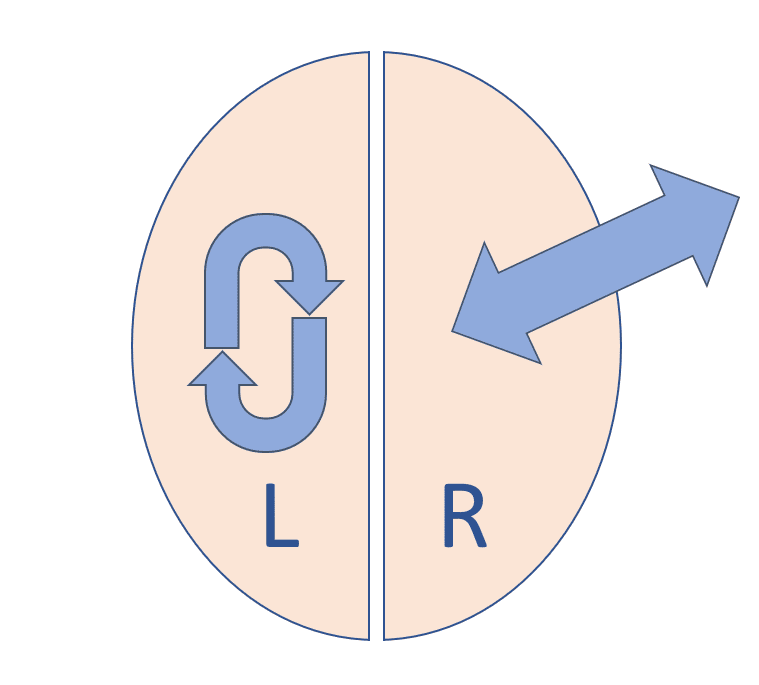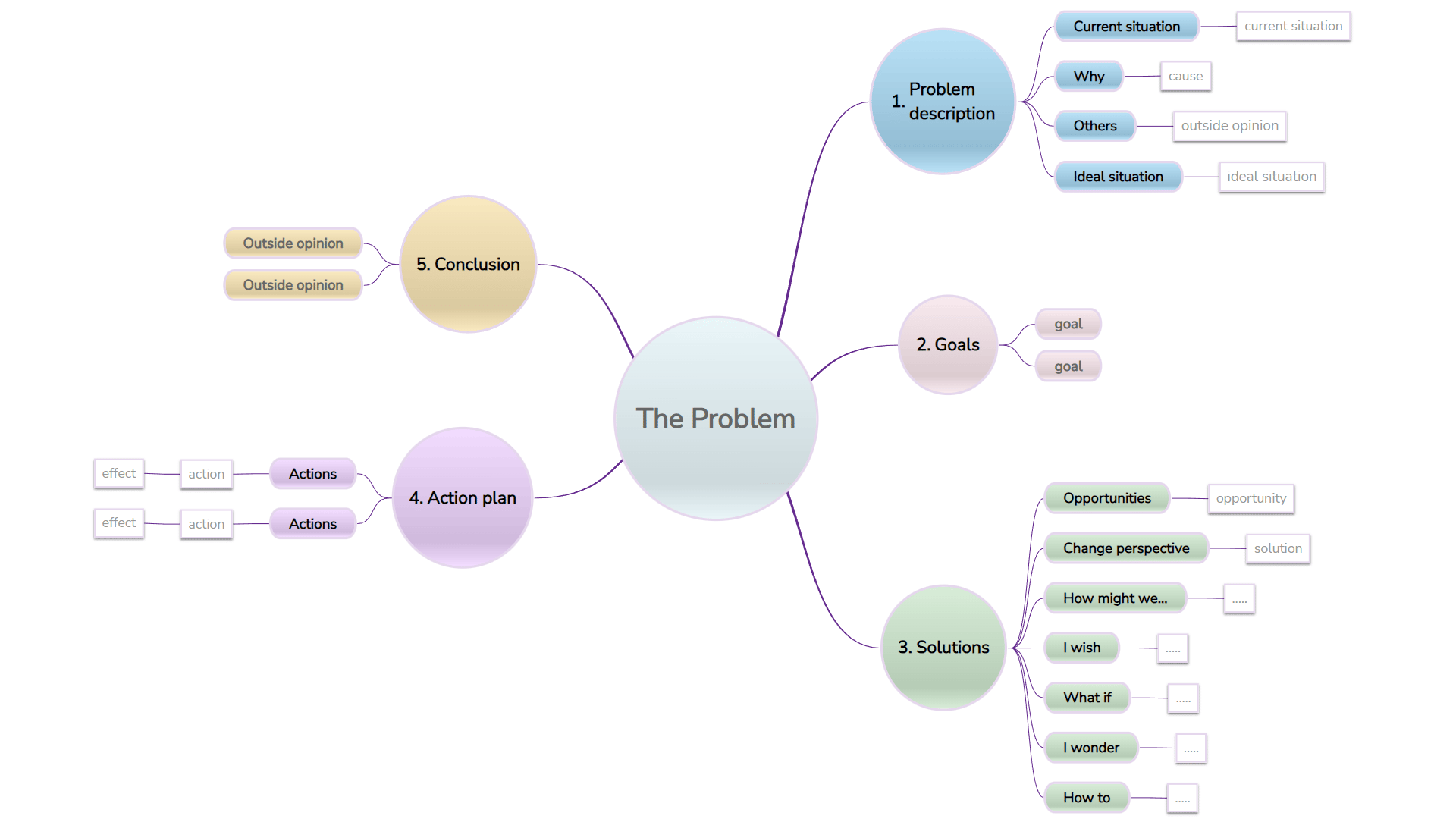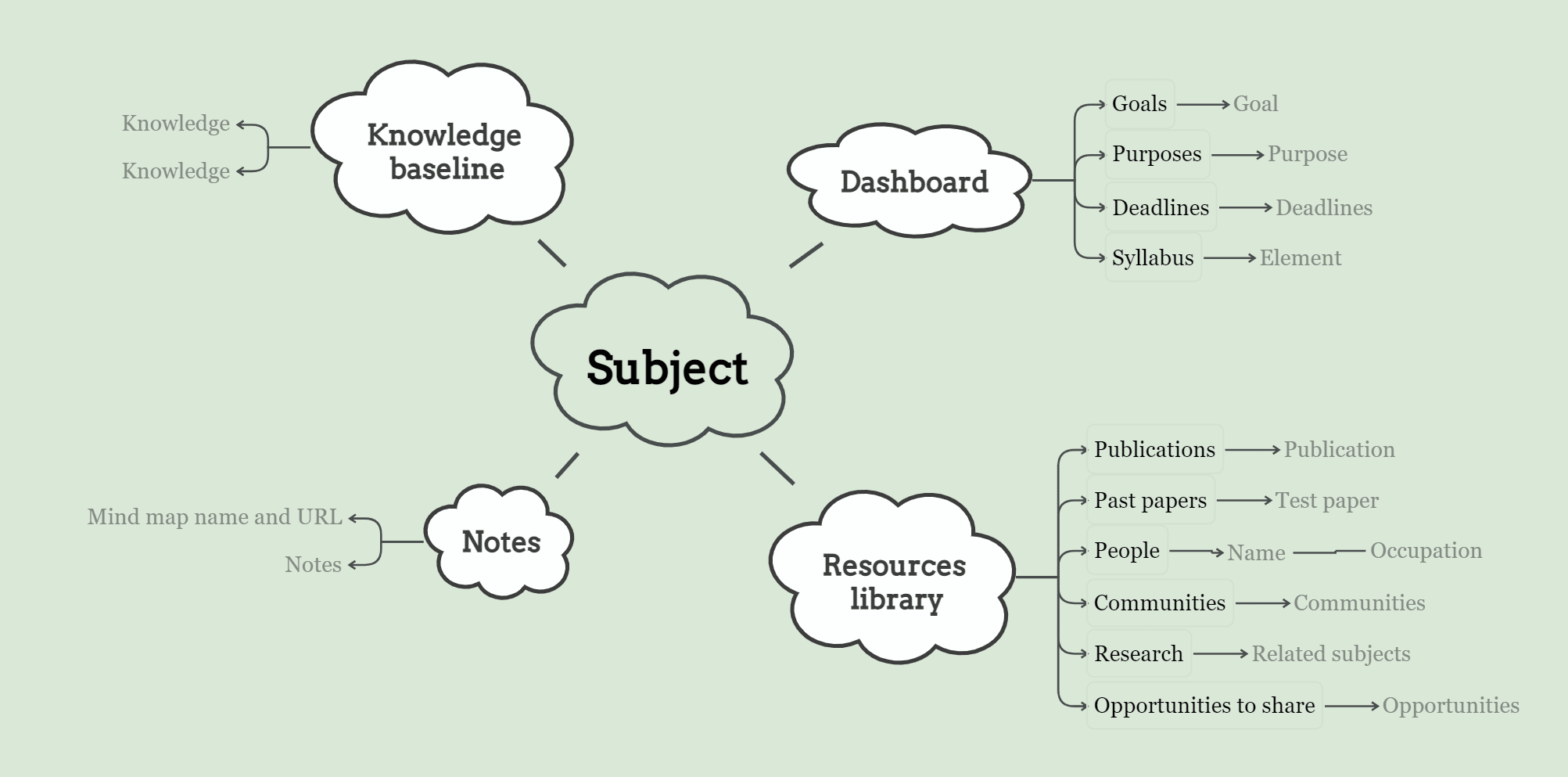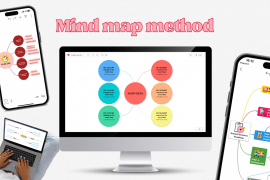
Mind Map diagrams appear simple, and keen mappers are eager to share their maps with others. But there is more to creating high value maps than meets the eye. In this article, we look at five things that have been learned the hard way by mind mapping software users.
1. “Left brain” and “right brain” theories have changed
From the early days of Mind Mapping, it was taken as given that the left and right halves of your brain did different things. The left half “did” logic and language, while the right half “did” creativity and images. Mind Maps were supposed to combine both, bringing out the best in you.
However, psychology and neuroscience have moved on since then, and the current theories are much more interesting. The two halves of your brain spend a lot of time (and neurons) communicating with each other. However, they spend more time trying to suppress each other than working together. Both halves take part in things like logic, language, and art, but they pay attention to different things.

The left half is inward-looking and is interested in objects, analysis, abstract ideas, and rules. It is over-confident that it knows how the world works, or ought to work. It can concentrate hard on something, ignoring other stimuli.
The right half looks outwards to what is happening around you and is interested in people, relationships, and the big picture. It is comfortable with messy reality. Meanwhile, the left half is convinced that everything should follow the rules and work as designed. It’s no wonder that they try to suppress each other.
This is all described in Iain McGilchrist’s fascinating book “The Master and his Emissary“, which looks at the scientific, psychological, and cultural evidence for this theory. McGilchrist shows us that the western world is increasingly allowing unbalanced left-hemisphere approaches to dominate. You can see this in “group think”, where inspired ideas get squashed by critical thinking until there is almost nothing left. We need both perspectives to understand and work with the real world.
Mind mapping and human brain
The implications for mind mappers and mind map diagrams are significant. The claim that Mind Maps appeal to “both sides” of your brain is difficult to sustain. Mind map software is (accidentally) the perfect vehicle for the left hemisphere to express itself. It directly feeds the preference to divide, structure, categorize, and organize. But neatly structured software mind maps can be quite poor at revealing the relationships and influences that really matter. They favor rational approaches and don’t describe complexity or chaos very well. A lot of real life is complex and chaotic.
If you are a big fan of mind maps, there is some danger here. Suppose your organization is facing a complex problem, and you have captured all possible detail in an extensive mind map diagram. When you show it to your boss, they might perceive that you are analysis-oriented. They might prefer you to be thinking about strategy, sensing the big picture and context. They may already know that the solution does not lie in the analysis of detail but in a strategic level of understanding. You might unintentionally label yourself as a detail person, and your boss might not pay much more attention. The detail is good, but not without the context of a bigger picture.
What can we do about this? One approach is to create a mind map containing two pictures side by side: one of them a mind map of endless detail, and the other representing the context of the issue and important relationships within it. This helps you to think about a situation as a whole as well as analyze all the parts.
The Mindomo template map for managing a problem is an example of this approach. On the left of the diagram (favored by your right hemisphere), we have a graphic of the relationships at play in a problematic situation. On the right-hand side (favored by your left hemisphere) we have all the detail in a nicely organized tree.
2. Your map is not as obvious as you think it is
When you look at a mind map diagram that you have created, it reminds you of a lot of things that you know. When someone else looks at your map, it can’t remind them of things they don’t know. Two people can look at the same map and have very different experiences. You see perfect clarity, and they see a few fragments they recognize but presented in a strange way.
This can be hard to perceive and harder to accept. People assume that everyone else knows the things that are obvious to them. Not everyone is willing to say, “I don’t understand”. They might blame themselves for not understanding your map. You might have conversations where everything is clear to you, but the other person is confused without saying so. They may be nodding, but that doesn’t mean they have understood.
There are a couple of ways to share mind maps successfully. You can build the map collaboratively with others so that it includes their feedback and ideas. They can test their understanding through discussion. The resulting map is a diagram of your shared understanding and will mean as much to them as it does to you.
Or, if you need to share an existing map with others, be prepared to talk it through, explain your objectives, and show how it is built up in stages. Always start small with something that they do know and build it up from there. This leads us to the next point.
3. Big maps do not impress
You might have worked for many hours to create a mind map containing a ton of useful information. When sharing maps with colleagues, many people feel tempted to show the whole map to underline how much effort has gone into it. But strangely, not everyone appreciates this. It’s not often that someone says, “Wow – that’s wonderful! Show me more!” They are more likely to say nothing while thinking, “I’ll never understand all of that”. Or worse, they may be thinking, “Why do they expect me to be impressed with that?”
Showing someone a whole of a big map doesn’t help, since it is very likely to be unreadable at a scale that shows it all. Most mind maps look the same when zoomed out. Only the author will recognize the structure, colors, or key images.

There is nothing wrong with big maps, but often only the authors can really use them. Everyone else will react much better to a small map that they can see all at once. If you need to share your maps with others, concentrate on making your important points clear in a single-page map. Write statements around the central concept instead of keywords or headings. Hide all the justifications of your key statements and make them stand alone. Make sure that topics summarize what is under them and are not just titles left hanging. Set yourself a budget of ten main topics and don’t go over it.
This is easier to say than do but the effort leads to much better maps.
4. Lines and shapes matter
In the original Buzan mind map diagrams, ideas and their connections flow along the lines. Each idea leads to several others. It doesn’t matter if the connections make little sense, provided they make sense to you personally. This visualizes the way that you can recall connected ideas once you have a starting point.
Drawing and re-drawing the map helps you to make these memories. Edward de Bono had a similar concept; he visualized the formation of memory like hot water tipped on Jell-o. The hot water runs in channels, with the channels getting deeper each time you pour more water into them. Memories are reinforced by the regular recall.
With the invention of mind mapping software, we can easily draw topics as shapes connected by lines. Instead of a flow of ideas, we now have trees of connected things. It is a small step to think of these as headings or summaries, with their parts listed underneath them. The objects and the pattern of their children become more important than the connections.
There is an assumption that all the children of a topic are similar in some way and exclusive to each other. They might be the parts of their parent or a set of characteristics. The connection is implicit and similar for all the siblings. This is very different from a flow of connected ideas.
You might find that when brainstorming and thinking aloud, it is more natural to create a mind map with thoughts and ideas continuously flowing from the central idea along the lines in your map.
When representing tangible objects (such as tasks) on a map, a closed shape for the topic makes more sense. Hiding its children does not necessarily break a flow, it just hides more detail.
5. The map is the tool, not the software
Mind mapping software is used for a wide range of purposes. Often, people don’t have a clear purpose for making a map, but just want to start getting information and ideas together. But your map is the tool that gets something done, not the software.
Having a clear purpose for your map affects its design and the way you use it. When you share your map with others, the first thing you should clearly explain is its purpose. This sets the context for everything on the map.
If you can’t explain the purpose of a map, you will have no way to judge success or failure. A purpose means you can think about whether or not your map is working for you, and how it can be improved.
Below we look at some different purposes for using a Mindomo mind map.
Brainstorm map
A brainstorm map is a diagram for gathering ideas and is the most common type of mind map. Your goal is to generate as many ideas as possible around a central concept, before starting to group and filter them. Getting ideas into the map helps to trigger other ideas. You might be working alone or collaborating with others.
The map will never be viewed by anyone other than the authors, so making sense to anyone else is not a requirement. You can be as creative and disorganized as you like, which often helps with getting your thoughts and ideas down.
Get your brainstorming started with this brainstorming mind map template.
“Dashboard” map
A dashboard map is a diagram that helps you to organize information and navigate it. You might create a dashboard map to give you quick access to projects, useful websites, resources inside your organization, or reference information. You can also add frequently used checklists to your dashboard maps for quick reference. Dashboard maps may be personal to you or shared with others if you all need the same information.
It is important that things are organized so that you can find them in a couple of clicks. It’s also important that they stay up to date. If you create and use dashboard maps, update them regularly to remove stale information and add new information.
Productivity experts tell us that multi-tasking and context switching are expensive. We should focus on one thing at a time to maximize productivity. But the real world is not conveniently arranged like that. Sometimes we cannot avoid dealing with multiple issues at the same time. Being better at multitasking is an alternative approach.
Creating dashboard maps that help you to quickly re-engage with a complicated situation is an excellent way to use mind mapping software. You can afford to switch context for a while and feel confident about picking it up again by reviewing your map.
See this Mindomo Blog article about the Daily dashboard and try out the mind map template for more ideas.
Writing map
A writing map is a workspace for designing, writing, and publishing a document. The purpose of the map is to collect and organize information, then develop it into a document that can be published. The readers of the published document will probably never see the map that created it.
A writing map might be collaborative if several people are working on different parts of a document. It can start with brainstorming but needs to become increasingly better organized to reflect the structure of the story you are telling.
Read more on the Mindomo Blog on the Creating documents with mind maps article. You can also copy and edit this mind map template for more ideas.
Planning map
A planning map collects everything you are going to need to successfully complete a project or piece of work. The purpose of the map is to help you to prioritize, make decisions, and take action throughout the project. Planning maps are often shared with others and are frequently accessed. This means that they must be very well organized even if they start life as a brainstorming.
The central idea of a planning map is a statement of what you want to achieve. Planning maps will contain data, background information, resources, research, requirements, tasks, and schedules.
It is essential to update your map regularly, either when something happens in the project, or you are trying to understand why nothing is happening in the project. If the map gets too far out of date it is at risk of being abandoned or ignored.
Search the Mindomo templates for inspiration, or fill out this Advanced business project mind map template for a detailed overview of what a project planning map might contain.
Problem-solving map
A problem-solving map has a clear objective: to help you find a solution to an issue. The map is used to gather all the evidence you can, develop theories about the cause, and plan solutions. Within an organization, collaborative problem solving will give much better results. No one person has all the pieces of the jigsaw. Working together on developing a shared understanding is something that mind maps do well and is a big advantage when trying to solve an issue.
A problem-solving map has the problem as the central idea and contains data, theories, analyses, ideas for solutions, and action plans. Once the problem is solved, it will be helpful to review the map to understand what worked well and what didn’t. You should always try to learn from problems. Sometimes, learning from them is all you can do.
Check out the Problem-solving mind map template.
Learning map
The purpose of a learning map is to help you to understand and learn a new subject. Learning maps are unlikely to be shared with others, so you can organize them in any way that suits you. The map might be used as a reference to look up things later, or as a revision aid to help revise for an exam. It is likely that you will be working on it for some time, and it is important to review learning maps to see how far you have come.
Read more about this subject in the How to study with mind maps article and try the Subject mind map template for more ideas.
Sign up for your Mindomo free trial here.
Keep it smart, simple, and creative!
Author: Nick Duffill















